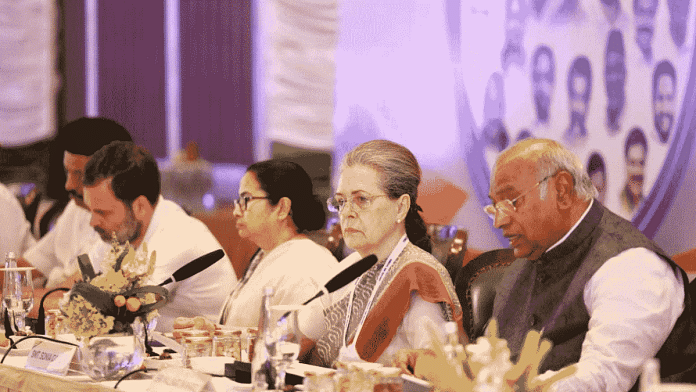The ‘unseat Modi brigade’, now under a new nameplate INDIA, or the Indian National Developmental Inclusive Alliance, recently held its second meeting in Bangalore, following the first one in Patna. However, not much has changed since then. The dreamers of a ‘Modi-mukt Parliament’ have sharpened their knives, aiming at the BJP, and particularly its tallest leader Narendra Modi. But this motley crowd of 26 political parties should know that they are not even at the knee-height of their target. Some of these parties were part of the Congress-led UPA, which miserably failed to dislodge the BJP twice.
It is not difficult to predict the outcome. Neither the Congress nor the other parties have a national leader with the stature and popularity that several BJP leaders enjoy. Additionally, these parties are unlikely to be willing to accommodate each other or even the Congress when it comes to seat-sharing for the 2024 Lok Sabha election. At best, they would want to contest from their respective states and hope to mop up Congress votes and those of other partners.
Except for the Congress, all other parties in the new avatar of UPA are highly apprehensive, and rightly so, of losing their support base in their respective states if they venture out of their domains of assured returns. Mayawati’s Bahujan Samaj Party (BSP) is a classic example of a party trying to ride two horses at the same time. Her all-India ambition to be seen as a ‘Dalit icon’ has not won her votes or acceptance in other states; in fact, it eroded her dedicated vote bank in her “karmabhoomi” Uttar Pradesh.
Two reasons are forwarded to support the argument that the BJP could be potentially unseated in 2024 by the combined strength of anti-BJP parties. The first is the recent defeat in the Karnataka assembly election, and the second is the historic defeat of Atal Bihari Vajpayee in 2004, when the Indian economy was doing well and the country’s global acceptance was high.
Also read: Modi is following the 2014 script in criticising INDIA alliance. There’s just one twist
Where the new group gets it wrong
The 2023 election in Karnataka was a different scenario where the BJP faced the Congress in a straight contest, and the incumbent chief minister did not enjoy the same popularity as some of his predecessors. Moreover, the Congress successfully managed to create a public impression about the BJP government as having failed to arrest corruption. It also projected a chief ministerial face, although the party did face problems in resolving the infighting after the results.
In the case of the 2024 Lok Sabha election, none of these Karnataka-specific factors apply nationally. The contest is not going to be a straight one. The Congress does not have a prime ministerial face. In fact, its president Mallikarjun Kharge has announced that the party is not interested in the PM post. It is just a Congress strategy to keep the other parties in ‘INDIA’ until the election. The moment it declares its intent to lead the new UPA, many partners would desert the platform.
Touting the 2004 election result as a successful mantra to defeat the BJP in 2024 is again an irrational argument, because the 2004 contest was between the BJP- led NDA and Congress-led UPA. While the BJP got 138 seats (22.2 percent votes), the Congress won 145 seats (26.5 percent votes), a small difference of seven seats. BJP’s two strong allies, AIADMK in Tamil Nadu and Telugu Desam Party (TDP) in Andhra Pradesh, got zero and five seats, respectively; all other NDA partners collectively lost 113 seats. It was this factor that unseated the Vajpayee government. It is not only unlikely but also impossible for the Congress and the other 25 parties to even reach a decent three-figure mark in 2024.
The best bet for the Congress, therefore, would be to abandon attempts to bring back its estranged UPA partners and cobble an alliance of strange bedfellows. Many of these parties are family-owned and have faced allegations of corruption and embezzlement of public funds. The Congress will be carrying the burden of their actions on its shoulders.
Besides, none of these parties have a nationwide presence; they are restricted to one state with a limited vote bank. The Congress is the only party with an all-India network, albeit weak and rickety. This is why the new UPA retains its former chairperson, despite the party’s dynastic structure and failed leadership that add little value to the new grouping. The Congress should prepare to go it alone in 2029, if it manages to survive until then. It should not be a surprise if some of its INDIA partners manage to worm their way into the NDA after the 2024 Lok Sabha election results.
Seshadri Chari is the former editor of ‘Organiser’. He tweets @seshadrichari. Views are personal.






